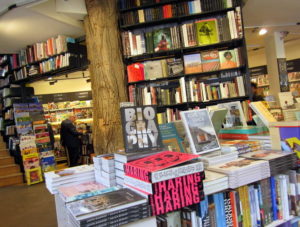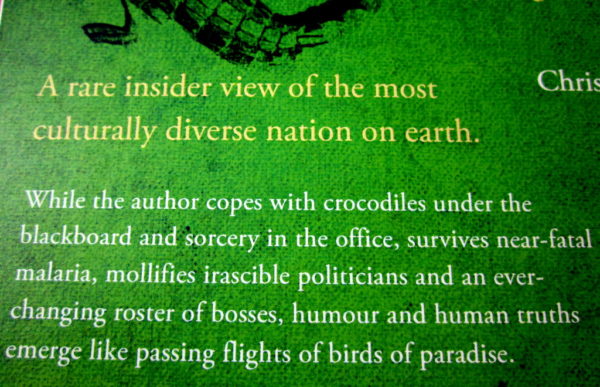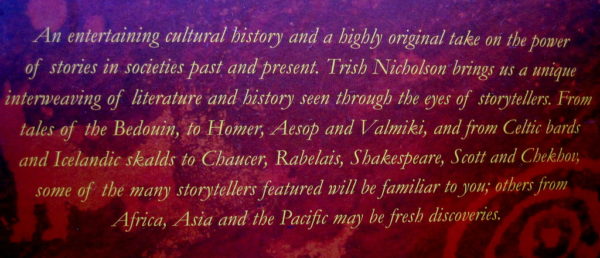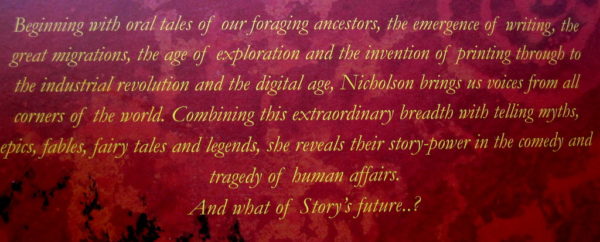 Be wary of paying high fees for someone to write your book blurb. An author knows better than anyone what the book is about, who they wrote it for and what they want readers to gain from it. A hyped blurb that misleads readers can backfire on authors.
Be wary of paying high fees for someone to write your book blurb. An author knows better than anyone what the book is about, who they wrote it for and what they want readers to gain from it. A hyped blurb that misleads readers can backfire on authors.
Although writing a good blurb takes a bit of time and self-discipline to keep cutting and redrafting until you get it right, it is well worth the effort. To give you a start, I’ve pasted below a couple of pages from Writing Your Nonfiction Book: The Complete Guide to Becoming an Author, but note that the same principles apply equally to blurbs for fiction.
Writing a book blurb:
The blurb – for the online ‘product description’ or on the back of a paperback – is one of the most important pieces of text you will write, and will be redrafted and polished many times before you get it right. After the cover, the blurb is the next chance of grabbing the reader’s attention. Even then, they may read only the first couple of lines. It all seems grossly unfair that after the effort you have put into writing a book, you are granted only a few seconds of a potential reader’s time to convince him or her to buy it, but that is the reality. So here are the key points to remember:
- The blurb should be 200-250 words: if it is longer, it will not fit on the back of a print cover, or in the display space allotted by online distributors – readers would be obliged to click ‘more’ to read the rest, and they probably won’t.
- Don’t try to summarise the book: pick its unique aspects and what the reader will learn or gain from reading it.
- The book’s chief attractions should be in the first line. What these are depends on the subject of your book, and whether the ‘specialness’ is in the author, the content, or the readers’ potential gain.
Here are some examples of opening phrases: ‘Grandmother, Lucy Walsh crossed the Atlantic…’; ‘All you need to know about…’; ‘Increase your energy. David Blanks unique…’; ‘The first published account of…’; ‘Grace Mitchell’s story of courage, survival and hope…’
- Avoid too much hype and elaborate ‘awesome’ adjectives because people won’t believe it.
- Engage your imagination. Think like a reader: it’s your subject, what would make you want to buy it?
- Cut, cut and cut again to eliminate every unnecessary word. Write in short and medium-length sentences and spend time perfecting them.
To start you in the right mind-set, here is an example of the opening sentences of a blurb before and after revision:
Initial draft: ‘In 2001, Ann Strop left the modern conveniences of her flat in Manchester to travel across the world to Sarawak as a volunteer worker on a community project. She had to cope with unexpected house companions like snakes and bats, as well as all the challenges of understanding a totally different culture. It led to her questioning many of her preconceived ideas on life.’
Revision: ‘Snakes in her slippers and bats in the bathroom were the least of Ann Strop’s problems. Her adventures as a volunteer in the wilds of Sarawak challenged her outlook on life.’
[Excerpt from Writing Your Nonfiction Book: The Complete Guide to Becoming an Author pp.154-156]
For fiction, your synopsis is a helpful tool to extract precisely what you need in the blurb and you will find tips on writing a synopsis here.
We applied these principles to the back-cover blurb and product description of the travel memoir, Inside the Crocodile: The Papua New Guinea Journals:

Agreeing a blurb for the 480-page cultural history, A Biography of Story, A Brief History of Humanity, was more challenging because of the wide scope and mix of genres. Finally we focused on style, genres, approach and an indication of the wide ranging contents in the first 82-word paragraph.

The second paragraph (73 words) outlines the time span and leaves the browser with a tantalizing question.

After many redrafts and tweaks, the back-cover blurb used 155 words, but does it attract and intrigue a potential reader? You are the best judge of that. What do you think?
You might also be interested in two other posts in this publishing series: Anatomy of a Book Cover, and Publishing with Illustrations

Very interesting, thank you. I now have to write my own blurbs, having set up my own imprint. I usually trawl the bookshops, reading other writers’ blurbs and pinching good words or phrases. There is a definite art to it!
Hi Carol, yes, I should have mentioned the bookshop trawling. The potential problem there, though, is that certain words become popular on book blurbs, and by the time your own book comes out that word has become a cliche. I agree, it is a definite art and different to the writing and thinking that goes into the book itself.
I’ve been absent for some time, but now I remember why I used to love this blog. Thank you, I will try and check back more often. How frequently you update your site?
Glad you enjoyed the post. I’ve been a bit absent, too, but I plan to post weekly or fortnightly for the next few months.